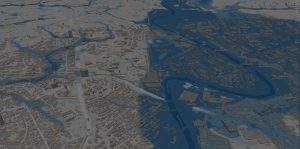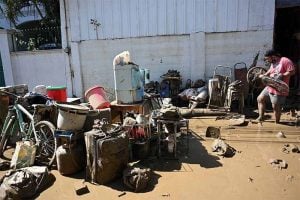
About The Center
UP NOAH works to raise the awareness of Filipinos for hazards. We believe that an increased awareness for disaster risk is key in cultivating a culture of preparedness and reducing the catastrophic impacts of extreme hazard events. We do this by undertaking advanced disaster science research and comprehensive and multidisciplinary assessment of hazards. The results of this are developed into accessible tools that are relevant for local government units, community leaders, policy makers, planners, and families to prevent and mitigate disasters.
Vision &
Mission
Vision
- A disaster-free Philippines with communities that are empowered with open access to accurate, reliable, relevant, and timely hazard and risk information.
Mission
- To develop high-resolution hazard maps for various types of natural hazards using frontier science and cutting-edge technology and systematically simulate, validate, and improve geohazard maps.
- To undertake investigations in hydro-meteorological hazards to improve the country’s capability to prevent and mitigate the potentially disastrous impacts of natural hazards.
- To integrate and assist other agencies in identifying hydro-meteorological hazards with the ultimate objective of promoting safety in communities affected by natural hazards
- To collaborate with similar institutions or organizations, both national and international, in furtherance of the above purposes.
Establishment of the UP NOAH Center
- The University of the Philippines Nationwide Operational Assessment of Hazards (UP NOAH) was established in the University of the Philippines to conduct research, development and extension services on natural hazards, disaster risk reduction and climate change actions
- The University’s Board of Regents (BOR), in its 1325th Meeting held on February 23, 2017 approved the “Establishment of the Nationwide Operational Assessment of Hazards (hereafter, the NOAH) Center (for climate actions and disaster risk reduction management) at the University of the Philippines.
- The University of the Philippines Executive Order PDLC 17-03 formally established it as the UP NOAH Center in the UP System.
Directives
The University of the Philippines Executive Order PDLC 17-03 formally established it as the UP NOAH Center in the UP System.
- Assist the people and the communities throughout the country in climate change actions and disaster risk reduction by providing timely, reliable and readily accessible data and information such as hazard and risk maps as a basis for action by warning and response agencies (i.e. NDRRMC, DSWD, DILG, LGUs) against possible disasters that may occur from floods, typhoons and other natural hazards;
- Assist the people and the communities throughout the country in climate change actions and disaster risk reduction by providing timely, reliable and readily accessible data and information such as hazard and risk maps as a basis for action by warning and response agencies (i.e. NDRRMC, DSWD, DILG, LGUs) against possible disasters that may occur from floods, typhoons and other natural hazards;
- Support disaster risk reduction and management and climate change adaptation and mitigation efforts, and encourage public and private sector cooperation and partnership in the prevention and mitigation of disasters; and,
- Establish and sustain a national scientific research center for disaster risk reduction to generate science-based information, models and applications useful for disaster risk reduction and management, climate change adaptation and mitigation, resource management, water conservation and planning, land use and local planning, urban development, and engineering designs, and other similar mainstreaming actions, research, development and extension services.
Organization
Under EO PDLC 17-03, the UP NOAH Center is attached to the Office of the President of the University of the Philippines System and headed by its Executive Director, currently Dr. Alfredo Mahar Francisco A. Lagmay.
Initially funded by the Department of Science and Technology (DOST) from July 2012 to February 2017, it was a nationwide disaster risk reduction and management program that aimed to improve the government and Filipino people’s capacity to respond and prepare against the destructive impacts and effects of extreme weather disturbances. NOAH was initiated in 2012 by the DOST in response to the country’s need for a responsive disaster prevention and mitigation program.
Former DOST-funded Projects that were part of the NOAH Program from July 2012 to February 2017 include:
- Hydromet Sensors Development
- DREAM-LiDAR 3D Mapping
- Flood NET – Flood Information Network
- Disaster Management using WebGIS
- Enhancing Geohazard Mapping through LiDAR and High-resolution Imagery
- Doppler System Development
- Landslide Sensors Development Project
- Storm Surge Inundation Mapping Project
- Weather Information Integration for System Enhancement (WISE)
- Integrated Scenario-based Assessment of Impacts and Hazards (ISAIAH)
Recent News
Job Opportunities
EO PDLC 17-03
On February 23, 2017, the UP Board of Regents (BOR) announced the university’s adoption of NOAH upon the completion of its most recent project funded by the Department of Science and Technology (DOST). A recent Executive Order signed by UP President Danilo L. Concepcion, (EO PLDC 17-03), established the NOAH Center as a research institute in the UP System. Plans for the implementation of UP NOAH Center are still underway.









